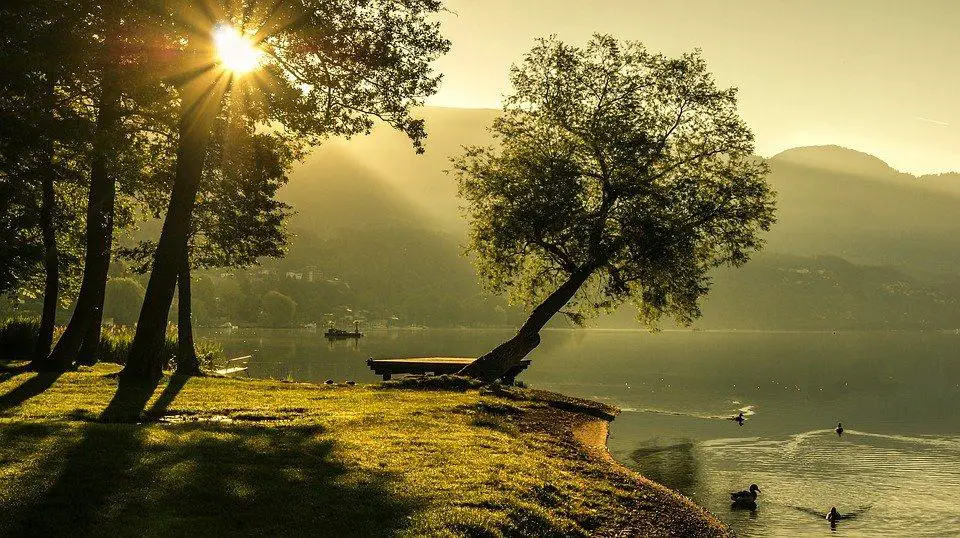The humble tree is one of the most powerful landscaping tools we have. In terms of design, it provides shelter, structure, and color to the garden and, according to one journal published by Landscape and Urban Planning, it can provide huge health and land value benefits on private or public property. Constructing your next landscaping project around trees is ambitious in the age of meticulously created urban landscapes, but it can bring a huge range of benefits and give you a truly individual greenspace. What’s required?
Tree health
The health of your tree stock is the underlying factor in any successful project. On face value, a tree with a common condition like root diseases may look unsightly. Underneath, they can be a health hazard and will, in the long-term, be unfit for your garden. According to WWLP TV, prompt removal of an unhealthy tree will help to prevent a lot of damage further down the line. That includes damage to the tree, but also your property; irregular growth of the trees, and diseases associated with them, can cause structural complications and impact the stability of your landscapes.
A dead tree, however, is not necessarily a bad thing. The key is in making sure there isn’t a living plant with active disease and rot. An already dead tree can act as a great landscaping tool for other features, such as fungi growth and certain types of wildflowers and grasses. This provides more detail and depth to your green spaces and in an entirely natural way.
Framing the garden
Healthy trees, or newly planted ones, can form the basis for your garden in the future. Consider how past greats did it. ASLA recently reviewed The Architecture Of Trees, which shows how trees can replicate the great building styles, from neo-Gothic use to Art Deco. Trees can evoke a certain architectural style, and you can use them to create the ‘walls’ of your property, a green view that brings in nature and turns it into the very bounds of your property.
Trees have such strength that they can even be the walls of your architecture. Fences can be created from closely-planted trunks, though you will need the expert help of an arborist to ensure that the plants will actually grow as designed. Taking this simple principle, of trees as what are essentially fences, is being taken to a huge level in some ambitious international projects.
Trees as DNA
Even outside of the realms of landscaping, trees are proving transformative architectural tools. The Architectural Digest highlights the Agora Gardens Tower, finally nearing completion in 2021, and how it has used trees to quite literally twist into the shape of the tower. Shaped like DNA, it will remove CO2 from the atmosphere over its life cycle and has a truly sustainable future. Trees are the absolute key factor in this building; they draw the eye away even from the unique double-helix style building structure that sticks out as a true monument in the skyline.
This type of premium housing is a huge trend in the luxury building market. Increasingly urbanized populations are looking for ways to enjoy the beauty of nature and green spaces within their homes. This is true for the rich and for those with more modest budgets.
Forest in the home
Less vertically spectacular and futuristic, but just as relevant, is the Shma Company tree design highlighted by Dezeen magazine. This is an example of how trees can be used at all levels of housing to help families enjoy the benefits of green living and for trees to perform a constant function in the home. They act as external walls, providing extra support to prefabricated construction. They provide natural shade and help to enhance fresh air, making the indoor urban environment more liveable.
Furthermore, and perhaps most importantly, trees used in this fashion can be scaled in either direction – to more expensive ends, or for budget housing. That’s the key factor that trees provide when it comes to modern housing. Once upon a time, they provided the original building blocks for shelter for human beings across the world. Once again, they can be used as that original shelter material, whether at a budget or a premium
From big projects to small, trees can provide a core to some truly transformative designs. The original natural building block, the wood and leaves that tree provide are natural, strong and very eco-conscious. That’s something fit for the modern ideals of architecture and one that will last long into the future. In many ways, architecture comes full circle by looking once again to plant life to provide the comfort and shelter that human habitation needs. Fortunately, these plants are perfectly positioned to give that sense of security.

